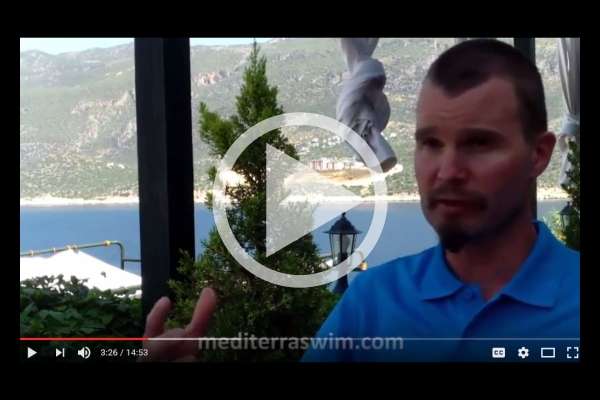
Interpreting Stroke Examples In Context

When we are viewing swimmers who are suppose to be examples for how we are to swim, we need to make sure we understand the context in which that person is swimming. Among the features that we may imitate, some features of the stroke might be suitable only for that context, some are suitable only for that person and some might be errors.
If you watch Coach Terry swim this way on a training video, Coach Shinji swim that way on Youtube, Michael Phelps swim another way on a World Record race, and then watch any other swimmer in a different situation, you start to notice differences in shape and differences in how they move. With all these variations becoming apparent, how do you know which example to follow?
It all takes some careful thinking, but your assessment is made easier when you follow a system that provides a structure and pathway set by orderly principles and logic. Such a system will necessarily lead to you toward a distinct way of shaping the stroke in certain situations. But even within such a system, and among those model swimmers and coaches, among those who are suppose to demonstrate the ideal, you will notice variations in how these principles are applied. What do you do with those variations? Who’s example do you follow?
In this 15 minute video I share my approach to this dilemma.
And below I will write out the essence of that talk…
Identify Principles First
First, there are principles in physics in water and physiology for all standard-equipped human bodies that all humans need to conform to. These principles will channel all humans swimmers (for each stroke style) to acquire certain similar body position and movement patterns.
In TI we have these three general principles to start with: Balance, Streamline and Synchronized Propulsion.
Is your stroke model conforming to these principles?
Consider Imperfections
Second, humans are not natural swimmers. Water is extremely unstable environment. These ideal body positions and all the details of the movement patterns are impossible to perfect even for the best swimmers in the world but every swimmer is rewarded for inching closer to that ideal. No one is perfect, but it makes much more sense in terms of physics and physiology to put effort into perfecting technique than into increasing strength to make up for inferior technique.
So, do not assume everything you see in your favorite swimmer is ‘correct’ or even superior to another. You should use a principle to evaluate whether what you see if closer or farther away from the ideal. Even the best swimmers in the world are displaying obvious inefficiencies. It just goes to show that even the best have room to improve. They are limited in time and energy too. They can’t do it all.
Is your stroke model putting effort into solving his improvement gap with more power or more technical excellence? Does that match how you want to go about it?
Identify The Context
Third, ‘the ideal stroke’ is not a single, one-size-fits-all situation thing – in each stroke style there is a variation of the ideal at different velocities – the swimmer needs to make slight adjustments as velocity increases or decreases. And, to adhere to the principles, the stroke needs to be adjusted further when swimming in different kinds of water situations – pool or open water, fresh or salt, flat or wavy, still or current, etc.
What is the context of that stroke demonstration? Does that match your context? Do the features of this person’s stroke apply to your situation?
Notice Individual Conditions
Lastly, what are the individual circumstances that might give advantage or disadvantage to this stroke model? Age is a factor. Male or female is a factor. Athletic history is a factor. Personal physical or medical limitations are a factor.
The goal or values for swimming are a factor. What is this person willing to pay to swim that way?
The young people swimming in the Olympics and World Championships are paying a price in time, in effort, in risk with extreme technique, in wear-and-tear on the body to get the to top that virtually no older adult is likely willing to pay. And, the competitive system they have grown up in has filtered out the bodies and minds of thousands of very hard working people who could not survive the grind. Only the luckiest few make it onto the videos we now watch and admire. This is not to rule out all their examples, but only to recommend that they be evaluated with a healthy amount of critical thinking.
It would be best to look for role models among those who match your situation and aspirations in as many ways as possible.
~ ~ ~
